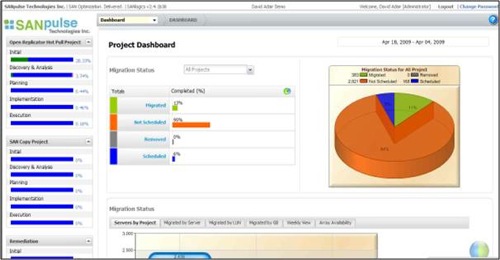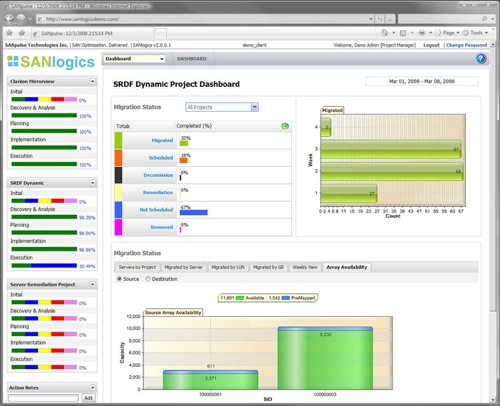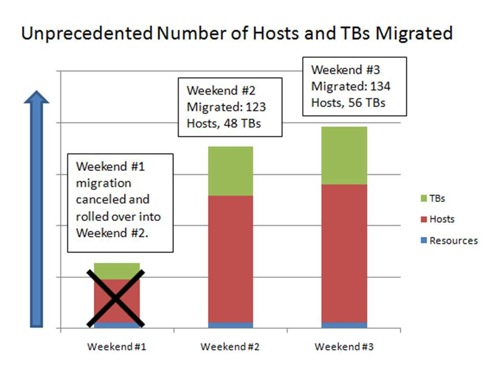Strategies for Reducing the Risk, Complexity and Cost of Moving from Traditional IT to Private Cloud Infrastructure in New White Paper
Migration Expert Offers Guidance to Organizations That Will Spend Over $100 Billion on Cloud Computing the Next Five Years
Paving the path to the next generation data center with technology led solutions, SANpulse Technologies, Inc., has announced a new white paper titled Migrating to the Private Cloud: Evolution of Infrastructure into a Service Model. The new paper focuses on Infrastructure-as-a-Service and key pitfalls to keep in mind when identifying the appropriate solutions to make on-premise IaaS deployments successful, helping organizations reduce the risk, complexity and cost of moving from traditional IT to private cloud infrastructure.

According to analysts, enterprises will spend over $112 billion on cloud computing in some form over the next five years. Organizations will spend more money on private cloud computing investments than on public cloud offerings through 2012. For business units, the private cloud provides agility and value, especially with regard to Infrastructure-as-a-Service. One of many advantages, IaaS enables companies to request on-demand configurations of back-end ‘plumbing’ to support their application and platform requirements for greater speed and business agility.
The ability to build a customized IT environment with the operating system, server configuration, and storage requirements in a matter of minutes is enterprise computing nirvana. Traditionally, requests for new infrastructure would take weeks if not months to be configured with charges for hardware, software and services regardless of its usage over time. By sharing the infrastructure resources in a pool and truly taking advantage of resource virtualization, enterprises now have the ability to build infrastructure-on-demand.
Revealed in the new white paper by SANpulse are many considerations to be cognizant of when looking into cloud-based infrastructure. These include:
• Security - For large enterprises the most important aspect of information management is its protection. Proprietary and sensitive data, if exposed, could have dire consequences to the business. Therefore most Fortune 1000 companies prefer a private cloud model.

• Understanding the Existing IT Environment - Enterprises must leverage solutions that can discover the infrastructure in a non-intrusive manner and provide the configuration and interdependency information vital to understanding what business units are utilizing today.
• Performing the Appropriate Planning and Coordination - The migration will require coordination among operational teams from the server, network, storage, database and application owners. As the existing infrastructure is dynamic and in constant flux, it is important to find a solution that can monitor the changes and drive process encapsulation into automation during cloud migrations.
• Identifying a Performance Tool that can Provide Accurate Detail on the Source of a Potential Performance Bottleneck - As the infrastructure is complex and has one or more abstraction layers, it is important to have visibility into shared resources for proactive management.
• Consideration of Multi-Tenancy Effects on Shared Resources - When building a cloud infrastructure, ensure it does not cause further performance degradation and provides alerts based on pre-set policies. A well thought out environment will be architected for maximum insight and efficiency.
• Capturing and Measuring the Constant Flux and Movement of Data Between Performance Tiers to Ensure the Tier and Time for Which it was Utilized are Accounted for in Billing - As one migrates to a private cloud environment, ensure that only essential data is optimized and moved while cleaning up the infrastructure in the process.

There are many providers from large system vendors such as IBM, HP and Dell to high growth companies such as Virtual Instruments and SANpulse Technologies that add great value in building and maintaining a cloud-based infrastructure. There are also many considerations to be cognizant of when looking for specific cloud migration solutions. While there is no nirvana where all the requirements are going to be met by a single tool or product there are solutions that provide a vast spectrum of the functionality required. During due diligence, identify solutions that work in conjunction to drive the establishment and management of a cloud-based infrastructure.
“Cloud computing is not a temporary phenomenon but rather one that’s here to stay. Its advantages, when deployed correctly, provide a grid-based model that yields great benefits to the business units,” said SANpulse CEO Peter Mehta and author of the new paper. “Key to making on-premise IaaS successful is process encapsulation driven by accurate analytics. It is essential to find solutions that can facilitate capturing the correct information and provide the ability to drive decisions through process automation.”
To Download White Paper, Click below.